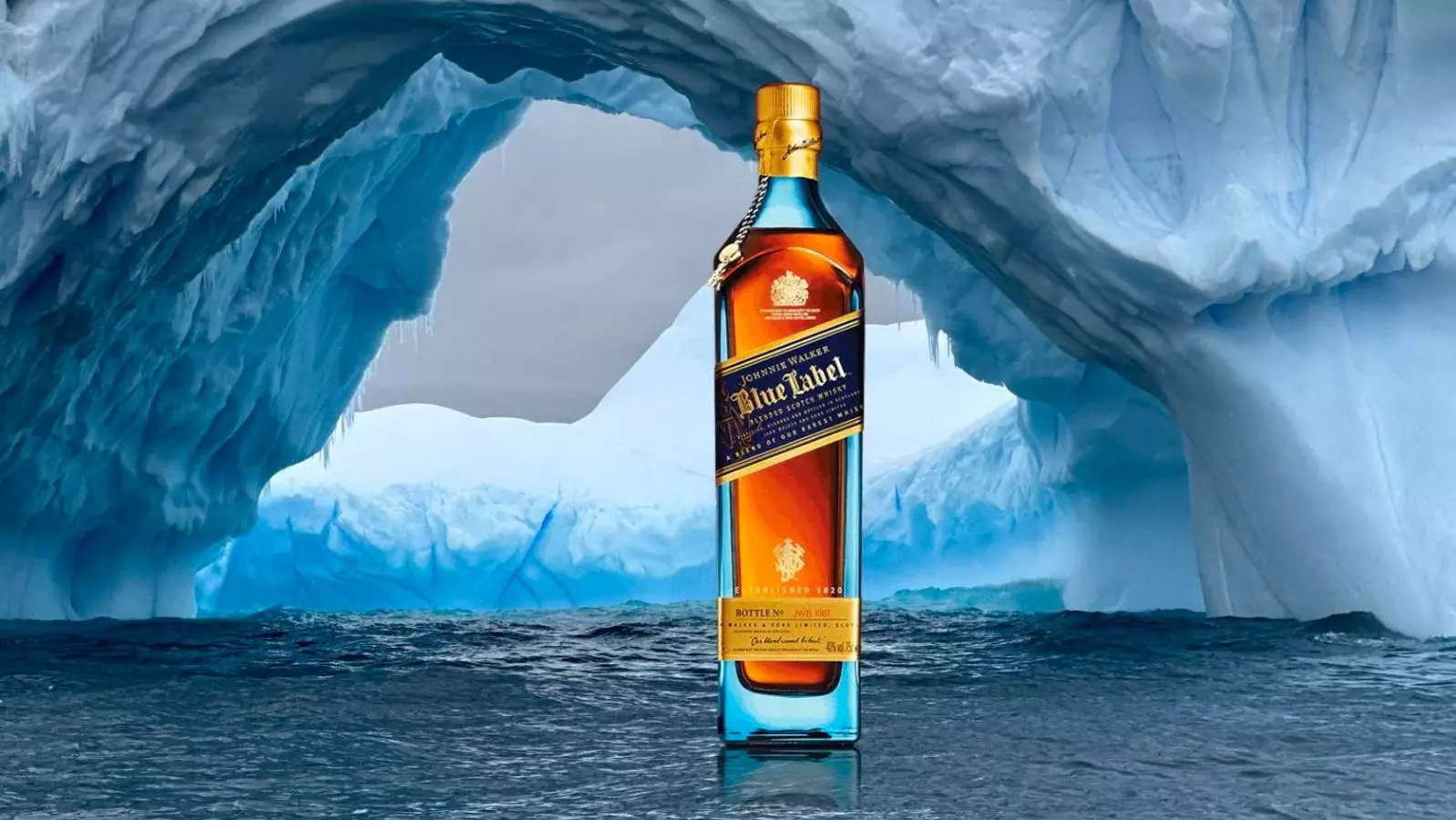For more than four decades, Johnnie Walker Blue Label has established itself as an emblem of luxury within the Scotch whisky market. First introduced in 1992, it paved the way for extravagant pricing in an industry where such allocations were rare. At a time when consumers were largely unaccustomed to spending over a hundred dollars on a bottle of whisky—except perhaps for premium cognacs—Blue Label emerged as the brand’s top-tier offering. This bold venture signified not merely a high price point but the distillery’s commitment to unmatched quality. With an incredibly selective blending process, where only one out of 10,000 barrels is chosen for inclusion, Blue Label exemplifies what it means to be truly exceptional in a market overflowing with choices.
The allure of Blue Label can largely be attributed to its intricate flavor profile and the well-structured balance of aromas. Those who indulge find the experience starts with a classical olfactory bouquet of honey and cedar, interlaced with the sweet medley of dried berries. Upon tasting, drinkers are greeted with a remarkable juxtaposition of toffee and campfire smoke, leading into a gentle finish that revisits honey and wood spices. Spirits expert Adam Gertsen lauds this unique complexity, claiming it rewards the palate with layers of flavors that persist into the finish. With an extraordinary silkiness and just a hint of smokiness, it stands not just as a beverage, but as a full experience that beckons those keen on exploration.
Johnnie Walker Blue Label does not merely rest on its aromatic laurels; its packaging further underscores its luxurious appeal. The cobalt-blue bottle, adorned with an elegant charm pendant, has transformed into a status symbol comparable to high-end watches and fine cigars. This aesthetic has helped cultivate an identity that extends beyond the liquid inside to encapsulate an entire lifestyle oriented toward exclusivity and sophistication. As the 21st century dawned, however, the whisky industry began witnessing a significant shift in consumer preference toward single malts, compelling Blue Label to adapt without losing its identity.
Despite the rise of single malt popularity, Johnnie Walker Blue Label managed to retain its relevance by incorporating a notably high percentage of malt content—some estimates suggest up to 80%—into its blends. In a market where typical blended Scotch contains considerably less malt, this flexibility speaks to the blending expertise of its creators and the robust flavor that Blue Label offers. Over the years, limited-edition bottlings have become a strategic approach to captivate the evolving tastes of whisky enthusiasts. Starting with the prestigious King George V edition in 2007, which celebrated its heritage, the brand has continually introduced unique creations tailored for connoisseurs seeking depth and complexity.
Under the stewardship of master blender Emma Walker, appointed in 2021, the Blue Label brand has witnessed a surge in innovative expressions that cater to an upscale demographic. Introduced in 2023, the Xordinaire blended Scotch showcases a vibrant flavor profile owing to its finishing in XO cognac casks, setting the bar for future creations. Another notable release, Elusive Umami, crafted in collaboration with renowned Japanese chef Kei Kobayashi, exemplifies international influences reshaping the Blue Label identity. Collaborative efforts like these highlight the brand’s commitment to modernizing its offerings while paying homage to tradition.
A striking example of contemporary branding is the Johnnie Walker Blue Label Ice Chalet, which features a distinctive packaging approach that reflects alpine themes. The integration of fashion into the whisky experience, seen through the partnership with skiwear brand Perfect Moment, signifies an evolving landscape where luxury whisky is not just a drink, but part of a broader lifestyle choice. This creative strategy has positioned Blue Label favorably, appealing to consumers who value both aesthetics and quality.
Even in an ever-changing market, Johnnie Walker Blue Label has withstood the test of time, solidifying its status as a prominent figure within the luxury whisky realm. As explained by beverage professionals, its heritage, combined with contemporary innovations, allows it to stand out among competitors. Blue Label is not merely a whisky; it has evolved into a cultural icon. With its exceptional quality and thoughtful marketing, it continuously draws the attention of both whisky aficionados and new consumers alike, effectively encapsulating what it means to enjoy a premium blended Scotch. Whether at engaging events or in serene home settings, Johnnie Walker Blue Label embodies a celebration of luxury and craftsmanship that is unlikely to fade from the public’s consciousness any time soon.


Leave a Reply